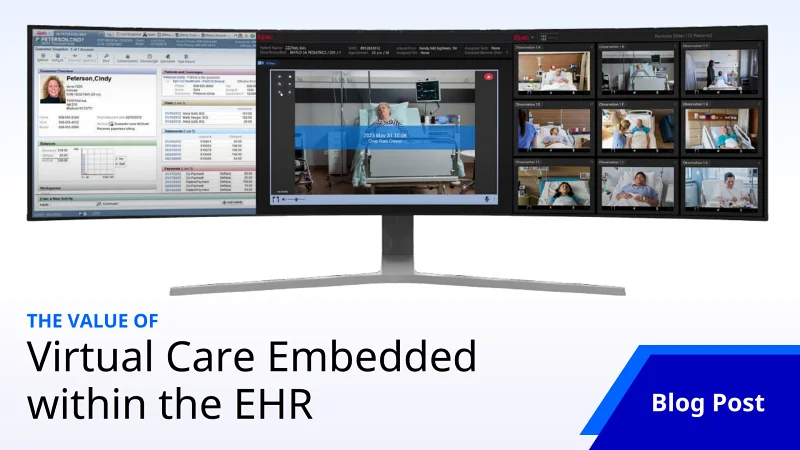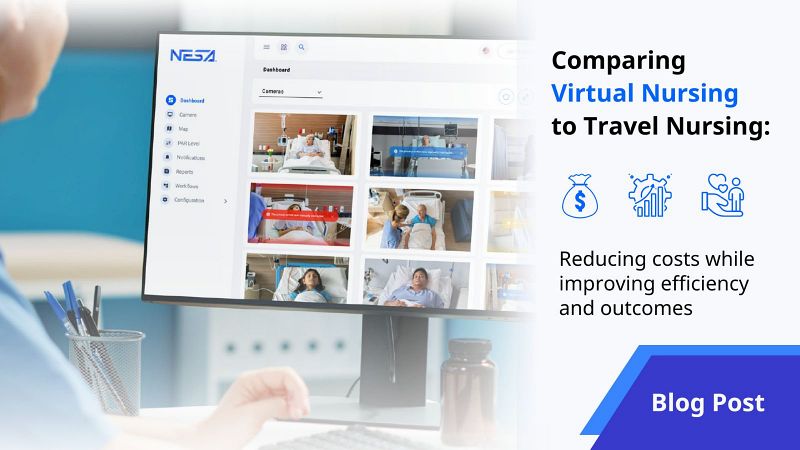
Recently, I have been asked about the difference between an “embedded” vs. “integrated” Virtual Care platform within an Electronic Health Record (EHR).
The terms "embedded" and "integrated" are often used interchangeably when discussing virtual care within an EHR, but they can have distinct meanings in this context. Here’s a breakdown of the differences between having virtual care "embedded" into an EHR versus "integrated" into an EHR:
Embedded virtual care means that the virtual care functionality is built directly into the EHR system as a native component. It is part of the core EHR software, developed and maintained by the same vendor.
There are many distinct benefits to an embedded virtual care solution, such as:
- Single Sign On – Since the virtual care platform is a native part of the EHR, users don’t need to sign into a separate software platform, making it incredibly easy to access.
- Seamless User Experience – Since the graphical user interface (GUI) is the EHR, users experience a seamless, consistent and familiar interface.
- Unified System – All features and functionalities are designed to work together harmoniously, providing a cohesive user experience.
- Simplified Workflow – The workflows are designed from the ground up to support both EHR and virtual care functions, reducing the need for switching between systems.
- Streamlined Operations – Less complexity in using and maintaining the system, as all functionalities are built-in and designed to work together, under one unified platform.
- Enhanced Performance – Higher efficiency and performance due to the integrated nature of the functions and features allowing for unlimited workflows.
- Single Vendor Support – Users rely on a single vendor for support, updates, and maintenance, simplifying IT management and ensuring consistent service quality.
- Unified Data Management – Data from virtual care is processed and stored directly into the patient’s EHR, without requiring additional steps for integration. For the healthcare organization, this eliminates any risks associated with personal health information (PHI) data processing and storage.
In contrast, “integrated" virtual care solutions involve linking a separate virtual care platform with an EHR system, typically through third-party applications or modules connected via Application Programming Interfaces (APIs) or other integration methods. This setup can be complex and may require ongoing maintenance to ensure seamless functionality between systems. Additionally, integrating with an EHR can increase data gaps due to the potential for data silos and inconsistencies. Furthermore, while data from virtual care sessions is accessible within the EHR, it usually involves syncing or transferring data between systems. Although integrated options provide value, they present risks such as documentation redundancy, additional system maintenance, and vulnerabilities in patient health information.
Conclusion
An embedded virtual care solution offers numerous advantages that enhance healthcare delivery and operational efficiency. By integrating seamlessly with the EHR, it provides a single sign-on for users and ensures a consistent user experience through a unified interface. This unified system not only simplifies workflows and operations but also boosts performance by leveraging integrated functionalities. Additionally, healthcare organizations benefit from streamlined support and maintenance from a single vendor, while ensuring secure and compliant data management directly within the EHR. Overall, these features make embedded virtual care a robust solution that improves patient care while optimizing healthcare workflows.



